Latitudinal and Longitudinal Explorations of Natural History
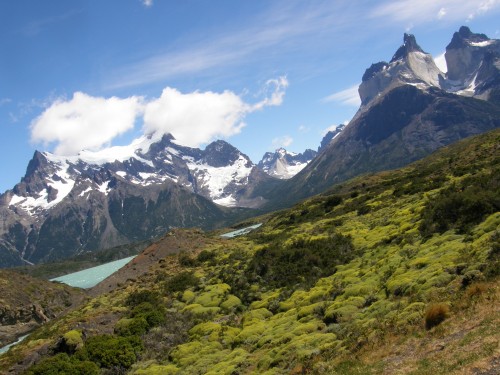 As much as we love North Cascadian landscapes, we here at the Institute are still called to visit and experience other amazing places on our planet. We publish accounts of the places Institute staff and graduate students visit in our Road Trip series.
As much as we love North Cascadian landscapes, we here at the Institute are still called to visit and experience other amazing places on our planet. We publish accounts of the places Institute staff and graduate students visit in our Road Trip series.
As graduate students immersed in developing a sense of place within the rich, rugged landscapes of the North Cascades, we spend a lot of time attending to, and exploring, the natural world outside our doorsteps. At the Environmental Learning Center, our academic studies of the history, culture, ecology, art, and conservation of this place are integrated with actual feet-on-the-ground learning. This type of naturalizing is a practice that takes patience, and a willingness to move through our surroundings with careful observation as we slowly make sense of its many patterns and intricacies. The deeper we go in this process, the more the meaning and being of the North Cascades opens up to us. We begin to understand the stories written on and of this landscape, and our place in it.
For many of us, this practice of Natural History in all its interdisciplinary forms roots us intimately and specifically to the high mountains and steep river canyons of this region. The nature of this type of learning means that, for many graduate students, we will leave this program knowing the North Cascades better than we know our own, native homelands. How then, do we translate the tools we are learning here to other river drainages, mountains, high deserts, or valley bottoms?
In an effort to explore this question during our month-long respites from the North Cascades, Kiira and I reflected on how the practice of natural history can be used to cultivate awareness and develop a deeper sense of connection to any landscape that we move through. While Kiira’s travels took her home to the rolling hills of southern Vermont, mine took me south into the austral summer of the Patagonian Andes.
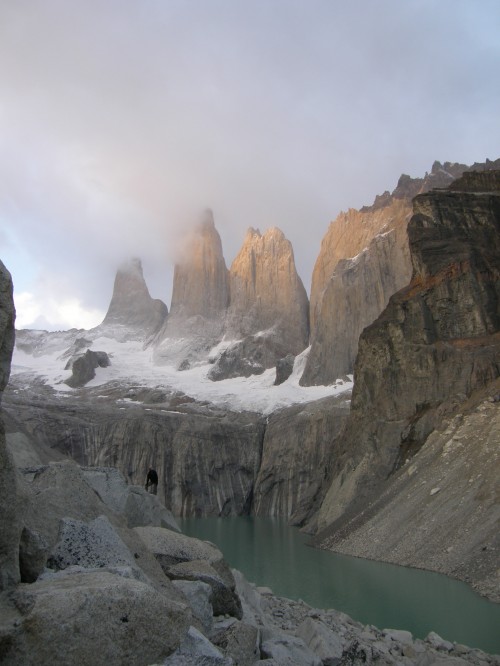 Sunrise over the three granite torres in Torres del Paine National Park, Patagonia, Chile. Photo by Christen Kiser.
Sunrise over the three granite torres in Torres del Paine National Park, Patagonia, Chile. Photo by Christen Kiser.
by Christen Kiser.
I flew about as far south from the equator as we live north.
As you can imagine, leaving behind winter with its four hours of direct sunshine to embrace the heart of summer and light in Patagonia presented quite a shock to my sense of being. Before setting my feet firmly on Patagonian soil, I knew about as much of the region’s natural history as one knows after a brief scan of a brochure picked up at the entrance to a national park. But I felt energized and excited to explore Patagonia’s beauty by hiking its glacial valleys, following its river drainages, and summiting its ridgelines, all the while sticking my nose into the delightful world of exotic looking natives at my feet.
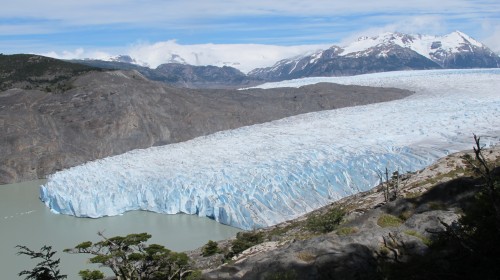 Glacier Gray at the northern end of the southern icefield in Torres del Paine, Chile. Photo by Kai Girard.
Glacier Gray at the northern end of the southern icefield in Torres del Paine, Chile. Photo by Kai Girard.
Bridging the 49th and 50thparallels, the region known collectively as Patagonia in southern Chile and Argentina is a landscape of vast expansiveness and high, prominent peaks. It is also a land of incredible diversity – the result of dramatic maritime climatic and precipitation patterns, complex physical relief, and the sheer size and volume of its glaciers and ice. The eastern slopes of the Andes are dry and sandy, some places sitting in the rainshadow receive less than 10 inches of annual rainfall, while the western slopes where rain is more abundant bloom with wildflowers. On high peaks, up to 290 inches of annual precipitation can accumulate each year as snow. The immensity of the Patagonian steppe and Andean mountains immediately commands my attention, and I find myself eager to get into the details so that I might piece together a broader narrative of this region.
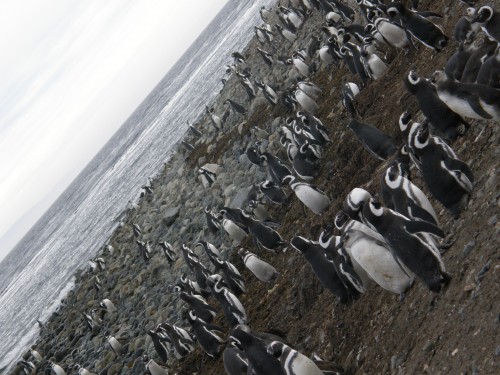 Magellanic Penguins breeding in the austral summer on an island in the Strait of Magellen, southern Chile. Photo by Christen Kiser.
Magellanic Penguins breeding in the austral summer on an island in the Strait of Magellen, southern Chile. Photo by Christen Kiser.
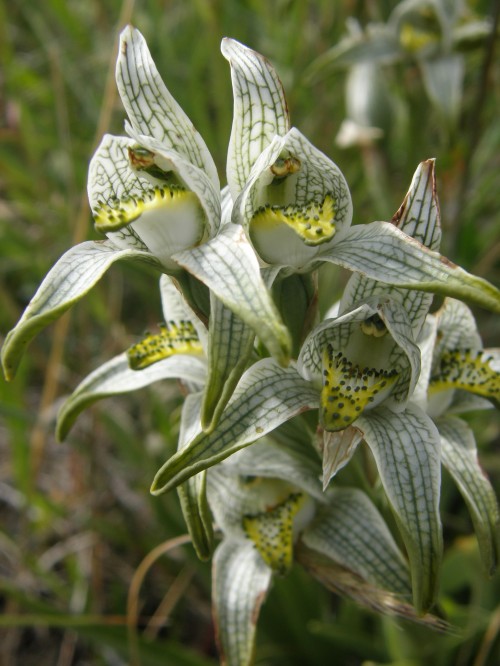 Pico de Loro Orchid captured in a transition zone between valley and forest while backpacking through Torres del Paine, Chile. Photo by Christen Kiser.
Pico de Loro Orchid captured in a transition zone between valley and forest while backpacking through Torres del Paine, Chile. Photo by Christen Kiser.
My approach to natural history has often been to start with what is tangible and work my way deeper. In such an unfamiliar landscape, I carry with me a field guide of the region’s flora and fauna, expecting the details to be in the flowers identified, the rivers named, and the peaks categorized by height in relation to one another. But as I explore the mountains and coastal fjords, I quickly realize that the greatest tool I have as a naturalist in unfamiliar surroundings is not my field guide, but my own desire to ask questions of a place and to interpret their meaning from the landscape.
My traveling partner, Kai, and I spend most of our time together backpacking through the region’s many national parks. As we hike, I find myself in an almost constant state of awe at the familiarity between this unknown landscape and that of the North Cascades – the same shaping agents of weather and glaciers transforming valleys and peaks, depositing glacial flour into rivers and lakes, creating hanging valleys and rocky terminal moraines, texturing granite surfaces, and leaving behind vestiges of aesthetic and unparalleled beauty. Once we gain treeline, the true influence of such a glaciated region opens up to us, and I find myself looking out over a crevassed sea of white and blue stretching far into the horizon – the northern end of the southern ice field. Glaciers are a more palpable presence here, and I think perhaps that their influence has something to teach me about the glacial remnants in the Cascades.
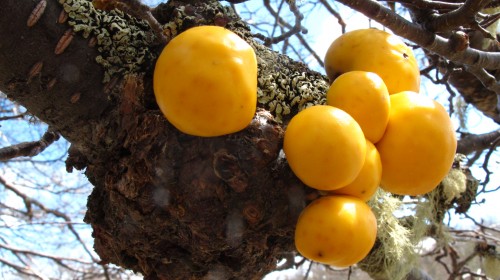 Pan de Indio fungus growing on a tree knot in a southern beech tree. Photo by Kai Girard.
Pan de Indio fungus growing on a tree knot in a southern beech tree. Photo by Kai Girard.
The more I observe these kinds of patterns, the more familiar Patagonia seems to become. I start expecting to see certain species – figworts, anenomes, asters, orchids, buckwheats and honeysuckles, each with their own spanish flair of color and name. I even notice nitrogen-fixing vetches creeping in along disturbance edges. As we move between realms of grasslands and the beech dominated forests of the mountain slopes, I begin noticing gull rusts, hanging mistletoes, and spherical funguses growing with bright orange fruiting bodies. With an eye trained towards the blister rusts and mistletoes doting the forests of the Cascades, I am immediately drawn to these otherworldly spheres latching onto tree branches. Once my eyes are tuned to them, I begin noticing them everywhere, and the beech forests of southern Chile become overwhelmed with these hanging globes of decay. I surmise that the infected trees form knots as a defense mechanism against the fungus, and it seems that in this landscape the fungus is winning. I learn later that they are called pan de indio, and are a popular edible quite tasty fried in butter.
As I wake to another windy, austral day amidst the backdrop of the Patagonian Andes, I again think of the relationship between this landscape and the North Cascades. I know so little of this place, and yet I see pieces of its story written in its valleys and arched granite peaks, and in the orchids growing along the forest edge. I realize that the natural history skills I have slowly been gaining in the mountains of the north have helped me to pick out patterns, to ask questions of my surroundings as I move through them, to find gratitude in still moments, and to honor the connections between this place and other, more familiar landscapes.
* * * * * * * * * * *
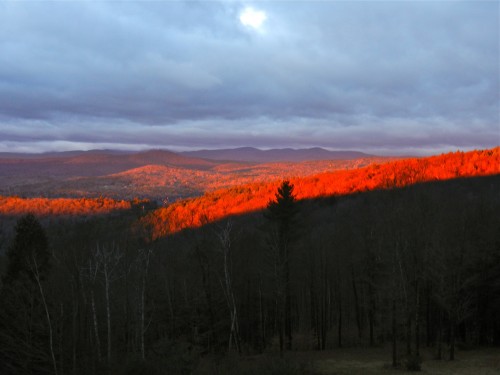 Looking west at sunrise from Putney Mountain, Vermont. Photo by Kiira Heymann.
Looking west at sunrise from Putney Mountain, Vermont. Photo by Kiira Heymann.
by Kiira Heymann.
Coming to a new place brings with it a certain kind of energy – a certain motivation to know a place first by its parts, to slowly piece together a broader understanding of the landscape. With these steps, we make acquaintance with our new surroundings.
Coming home is entirely different. Long before I knew the names red maple and sugar maple or even how to tell them apart, I knew what it was like to sit under them. To watch them turn firery red before falling to the ground each October, offering opportunities for crunching through the forest with my sister in a completely different way.
I have come to the M.E.d Graduate program as a student of this place – new species to learn (towering Douglas fir, leathery salal around my feet), new relationships to understand (eagle visitors and spawning salmon in the Skagit). My approach to natural history has been that of a traditional student, and I have enjoyed writing and drawing at my sit spot with Colonial and Pyramid peaks towering above me, slowly de-coding the intricacies of what I am seeing around me for the first time this year. And after six months of cultivating such an awareness, I found going home for the holidays to be a completely new experience.
Our family home, tucked up on a west-facing slope of the southern Green Mountains in Vermont, is surrounded by species that I know collectively as home. Species whose differences and details were slowly realized in biology and ecology classes, but who have always been present as a backdrop for our family story. My view of this place is wide-lensed. I don’t know how to identify many of the forbs in the field below our stone wall, but I know where to find them, and often which ones like to grow together. I don’t know the name of every rolling hill on the horizon, but I know which ones will likely show snow first come fall, which ones the sun will set over in winter, and which ones the sun will dance over in summer. I don’t always know why, but I know this place.
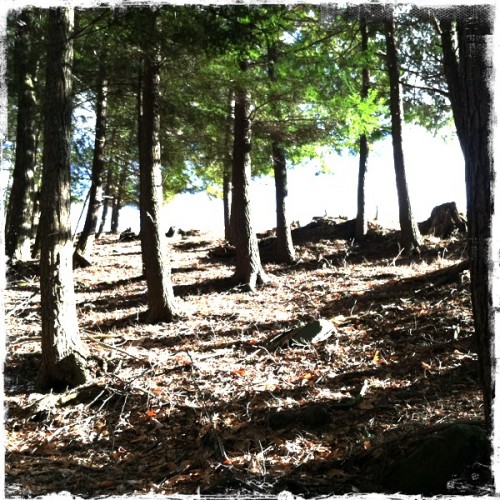 Under an eastern hemlock canopy below our family home. Photo by Erika Heymann.
Under an eastern hemlock canopy below our family home. Photo by Erika Heymann.
Mom, Erika, and I take the dog out for a walk below our field in the woods. White pine creep in at the edges of the hayed field, taking advantage of the sun and heat of the annually cleared space. Young red maple and beech share a similar sentiment and grow here as well. Walking north into the forest, hemlock become the dominant species and the forest floor opens up, providing for easy walking. My eyes, currently trained to western hemlock, mountain hemlock, and the difference between the two, latch onto the downed boughs of eastern hemlock that are scattered on the ground. Their shorter needles, smaller cones shock me at first – small, yet not at all small in comparison to this place. I turn my head skyward in gratitude for our trees, giants in their own right in this landscape. We collect cones to bring into the house, where they will open up with the heat and decorate our hearth for the holidays.
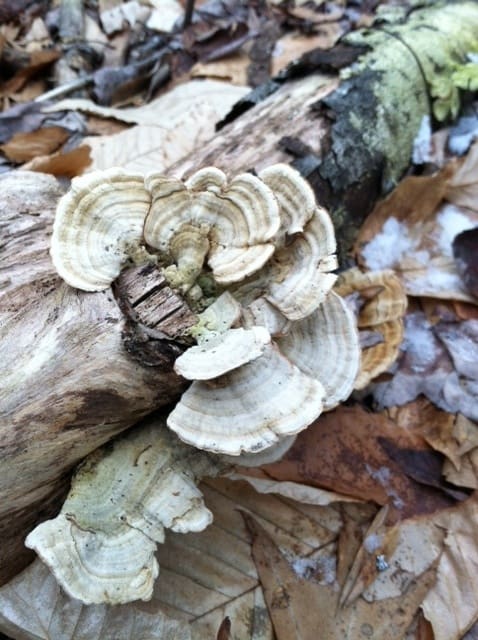 Turkey tail fungus growing on downed wood along the forest floor. Photo by Erika Heymann.
Turkey tail fungus growing on downed wood along the forest floor. Photo by Erika Heymann.
We skirt the old stone wall that marks the boundary to the farm that once covered most of this hillside. Downed trees are dotted with fungus – turkey tail and conchs of shelf fungus. The colors draw me in, twinges of orange in a rich, humus-brown setting. The fungus is one of the most common in these woods, I have no doubt grown up with it all around me, but after our fall fungal forays in the North Cascades I am suddenly full of questions about patterns in its growth and what it might tell me about this forest. It might tell me something I think I know, but have never taken the time to ask myself.
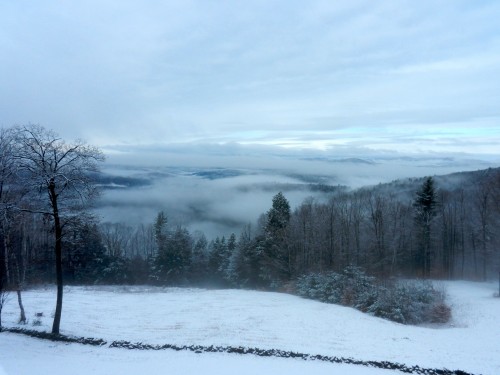 A snowy view from home, Putney, Vermont. Photo by Kiira Heymann.
A snowy view from home, Putney, Vermont. Photo by Kiira Heymann.
Hiking back up hill to the house, out of the forest and through the brambled field, I have to think about what it means to understand both of these places in relationship to each other. We develop a sense of place over time, but we also develop that sense after deciding that it is a place worth placing ourselves. The natural history skills I’ve slowly been crafting in the North Cascades have something to teach me about the place I know so well, the landscape I take for granted having grown up here. And New England some 3,000 miles away from those prominent peaks, has something to teach me about making the Cascades more than a chain of species and place names. It’s a sentiment of being somewhere, knowing it not well enough to call it by its name, but to call it home.
Leading photo of Torres Range and Massif in Torres del Paine, Chile. Photo by Christen Kiser.


Great articles you two. It is so wonderful to “see” these places through your eyes and words.
Wonderfully well written and inspirational pieces. Makes me want to go for a walk in the woods, to do it more slowly and with greater appreciation for the details. You are both first class writers and have much to offer with your perspectives. Love your pictures too!
It’s like reading National Geographic descriptions. I don’t think I’ll ever visit a new area without getgting a field guide. Thank you for blessing me this morning with your awesome pictures of Chile! lol, Sandy
It is interesting to note how we approach a new landscape. The familiar helps us to place some bering on the new surroundings and then there are the differences which pique curiosity and wonder followed by the questions.
The wonderful thing to me is that I find it always an intensely fascinating adventure and I never tire of spending time outdoors in natural spaces. Thank you for sharing yours with us.
Wonderfully thoughtful, thank you. It seems the more places you visit the more similar ecosystems and cultures seem to one another, evolving and adapting on the same temporal scale with similar geologic process. And even those places seen again and again can take on a new light when viewed through a naturalist lens. Love it, nice work ladies.